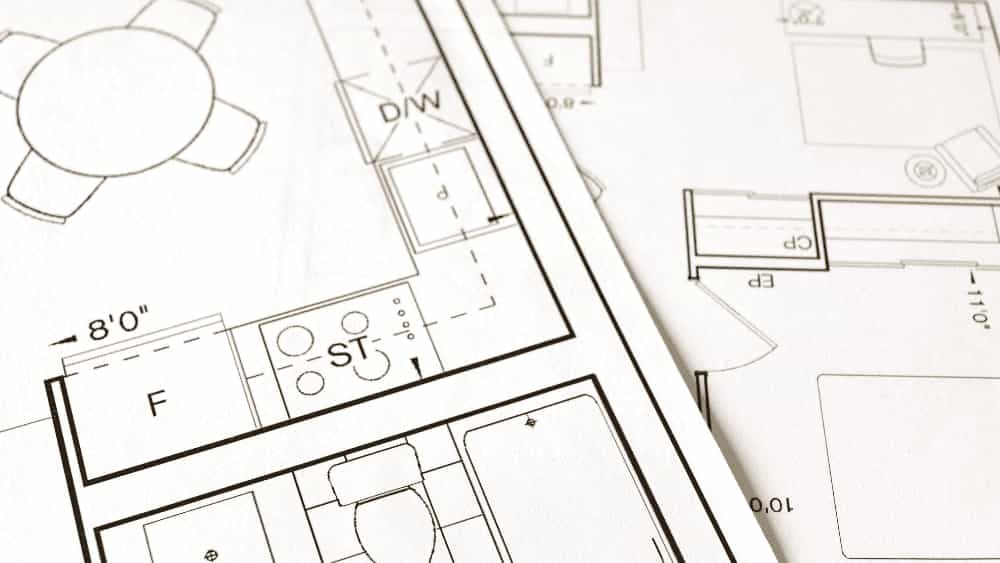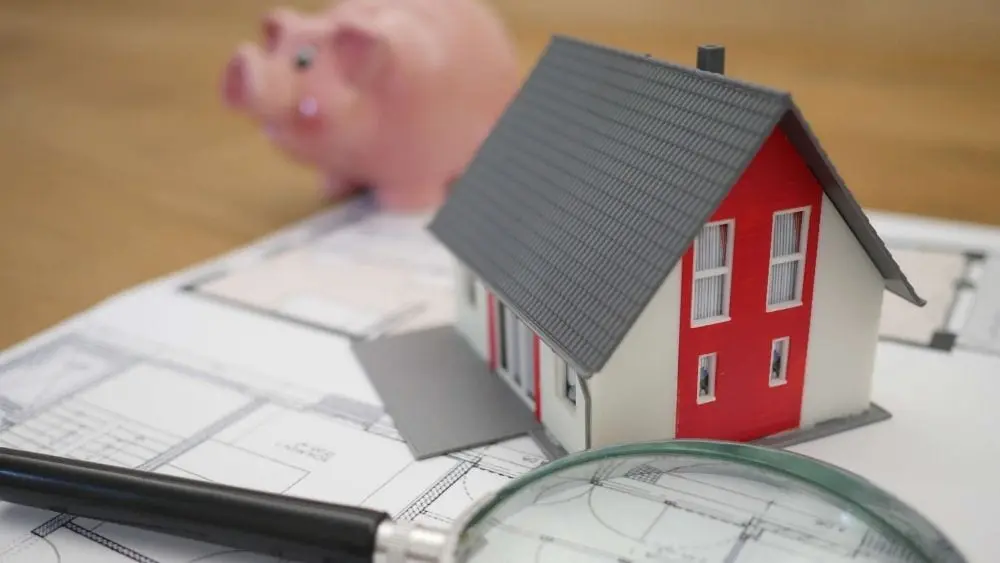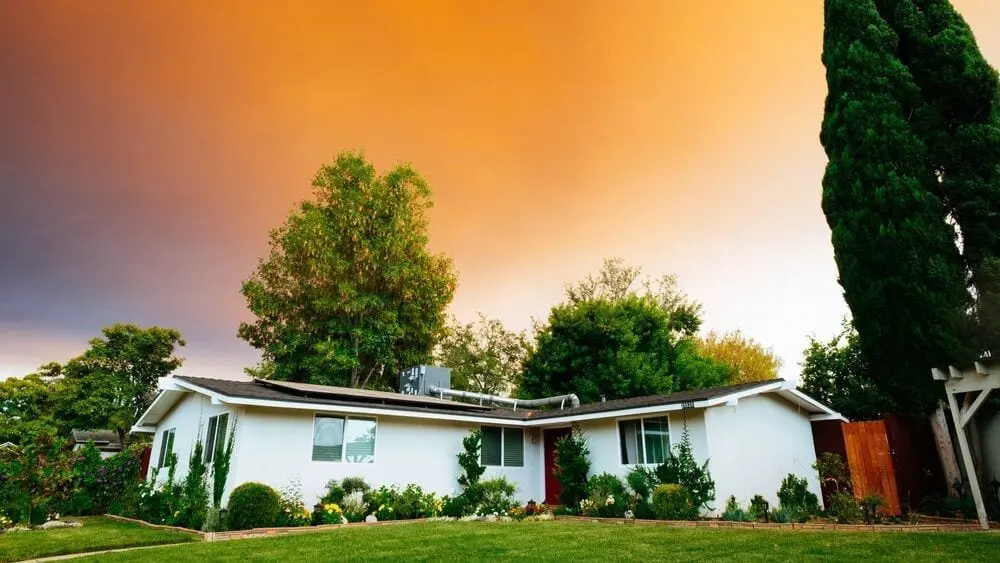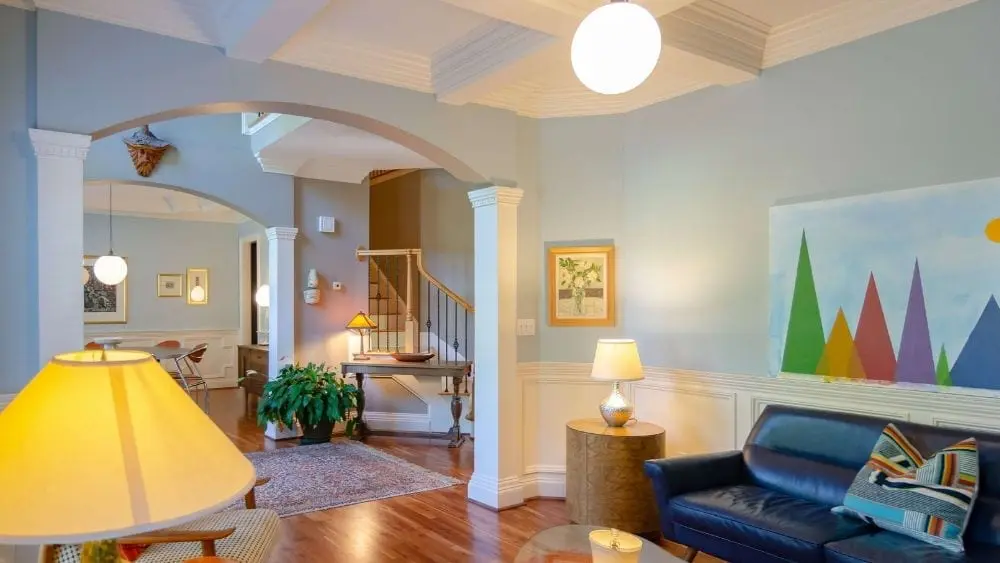
At this stage, you should have settled the question of custom or production. You’ve done plenty of research and identified several builders in your preferred area whose homes you like and that fit your budget. You’ve toured the communities and model homes of those builders, and you’ve taken steps to get your finances in order. Now, it’s time to make some big decisions.
The steps you take to buy and build your new home vary from one builder to the next, but, according to Dennis Webb, vice president of operations for Fulton Homes in Tempe, Arizona, the process generally goes like this:
- Pick a community.
- Pick a builder (if there’s more than one in the community).
- Pick a floor plan that best meets your needs.
- Pick a home site.
- Sign a purchase agreement or contract.
- Finalize all structural options within ten days.
- Finalize all other choices within thirty days.
Don’t forget that you are making multiple purchase decisions: Which new home community is the best fit for you, based on the amenities you plan to use? Which builder offers the best home for your needs? And which floor plan and lot are right for you. Sound hard? It doesn’t have to be, especially when you work through these decisions in a logical order.
“We sell the community first and then the house,” says Paul Erhardt, senior vice president of homebuilding and development for WCI Communities in Bonita Springs, Florida. “Think about the area you want to live in and the lifestyle you want. Are you retired or working? Do you want to be around young families? What kind of amenities are you looking for—a golf course, fitness center, craft rooms, a swimming pool, tennis courts? All of those amenities come with some ongoing costs in terms of association dues, so you need to sort out which community is right for the way you live and whether the cost makes sense.”
After you’ve identified the community you like, then you can look at the floor plan and the house.
Location Options for New Homes

If you already own land, you’ve settled the question of where to locate your new home. For most buyers, the main choice is between a master-planned community, an urban condominium development, or an infill development where one or a handful of new homes can be built in the midst of an established neighborhood.
Within a master-planned community, you’ll find a wide range of neighborhood styles, such as a development with multiple sizes and styles of homes or one with similarly sized homes and lots. If you’re buying your first home, you may want to consider the benefit of moving into a development with a range of homes at different price points, so that if you eventually decide to move up into a larger or more costly home, you won’t have to leave the neighborhood. You can start with a townhome or villa and perhaps move into a single-family home in the future. Larger master planned communities often offer several distinct neighborhoods, across many price ranges. This type of community can work well as your needs change. Perhaps you’re a move-up buyer who wants a larger home now while raising your family, but you may want to downsize as an empty nester. A community that offers a broad range of housing types and options can allow you to change houses but not neighborhoods, keeping you close to friends and family.
Shopping Tips for Choosing a Community and Builder

Most buyers readily admit that their favorite part of their new home search was visiting inspiring model homes and communities. There’s no better way to start to narrow down your list to specific new homes, communities and builders.
As you shop, rely on the expertise of the builder’s on-site sales consultants, a Realtor if you’ve chosen to work with one, and on information you gather in conversation with builders. In addition, experienced new homebuyers suggest talking to local residents.
“If you’re a new buyer, the best thing you can do is talk to people who’ve been through the process of buying a new home,” says Jeff Yeakel, a buyer in Brookhaven at Johns Creek, an active adult community in Johns Creek, Georgia. “You should give yourself at least ninety days to six months to look around at new developments to get ideas of what’s available and to ask questions of the sales people and the residents.”
A Realtor with experience with local builders can share information about which builders have a reputation for quality work and good customer service, but you can also do research on your own.
“Before you decide on a particular builder, check the company out on Facebook and look online for reviews,” says Dawn Easter, a buyer in Ironwood Crossings, a Fulton Homes community in Phoenix, Arizona. “Look at communities they’ve built to see how people keep their homes up. Drive around and talk to neighbors where you might want to live, or if you’re looking at a community where no has moved in, look at another community built by that builder and ask for feedback.”
One of your best resources when buying a newly built home is the sales consultant. A sales consultant can also explain the cost and availability of new homes in each community, which floor plans can fit on each lot and the types of options available with each floor plan. Your sales consultant can also help you determine if you might benefit from buying a home that’s already partially or wholly complete.
If you’ve decided to work with a production builder rather than hire an architect, you still have several choices for purchasing a newly built home. Builders offer new homes to meet most every desired timetable. Depending upon your desired move-in date — and how quickly you want to occupy a new home — many builders offer homes that you can build from scratch, partially completed homes and even fully completed spec homes. Here’s what to know about each.
Buildable Plans

Buildable plans are floor plans offered by the builder on a lot of your choosing. Keep in mind that not every floor plan can be built on every lot and that not every option you like will be available for every floor plan. Some builders offer a dozen or more homes per community while others offer only one or two.
The level of floor plan customization varies among production builders. You can find builders like KB Home that allow you to “build to order,” while others offer personalization through finishes and fixtures but no structural changes. Building from a floor plan on an empty lot can take four to six months or longer. Most builders will start construction thirty to forty-five days after you sign a contract depending on how long it takes to obtain the necessary permits and inspections of the site.
Quick Move-In Homes
Some builders choose to partially build a home and then offer it to buyers who can then personalize it. Webb says many of Fulton Homes’ spec homes are 30 to 60 days away from completion, which gives buyers the opportunity to pick a few optional features and finishes. Sometimes a quick move-in home is available because a sale falls through and the builder has to put the home back on the market.
Model Homes
Most builders upgrade their model homes to showcase optional features. These homes have been professionally designed and decorated and often include extra landscaping. Builders typically wait to sell the model home until a community is sold out or nearly complete, but sometimes they’ll sell it to a buyer who’s willing to lease it back to the builder and wait to move until the builder is finished showing the model. The Thompsons did just that at Brookhaven at Johns Creek.
“We loved the model home so much that we asked if we could buy it and lease it back to the builder,” Ernie Thompson says. “At the same time, we realized that the model is 4,000 square feet and someday we may want to downsize. We bought two more condos within the community because we didn’t want to lose out on them because homes were selling so fast. We lived in one until the model was ready for us. We’re using both condos for rental income now.”
When you’ve identified the builder and community where you want to live, it’s time to move beyond your preapproval for a loan and your estimated budget and start the process of solidifying your financing.
Understanding Your Financing Options

The type of loan you choose depends on your personal finances. Unless you’re a veteran or active service member and can take advantage of VA loans, which don’t require a down payment or mortgage insurance, you’re probably looking at a conventional or FHA loan. If you have good credit and at least 5 percent for a down payment, a conventional loan is usually a better option because your private mortgage insurance payments automatically stop once your loan-to-value reaches 78 percent, says Phyllis Casillas, a sales manager for On Q Financial in Tempe, Arizona.
“FHA loans have higher mortgage insurance premiums and you’ll have to pay it for the whole loan unless you make a bigger down payment,” she says. “However, FHA loans are a great option if you had a short sale or foreclosure in the past or other credit problems because they’re more lenient than conventional loans.”
Also keep in mind that loan programs change frequently, so when you’re ready to get serious about buying a home, you should always consult a lender.
Remember that a preapproval from a lender doesn’t obligate you to work with that lender. Of course, it’s easier in terms of paperwork to get your loan from a lender who’s already qualified you and understands your financial needs, but you can still choose to finance your house with any lender, regardless of whether you’ve decided to buy a home in a community with a preferred lender program or an in-house lender.
For the most up-to-date information and specific loan programs offered by a local community bank or credit union, you should consult your lender.
Major Types of Loans

In general, borrowers choose from the following loan programs, depending in part by their eligibility for some programs:
FHA Loans
FHA (Federal Housing Administration) loans are not actually approved by the FHA. Instead, lenders are authorized to offer FHA-insured loans. FHA insurance protects lenders in the case of a default by the borrower, so a lender is more likely to be a little more lenient with the credit score guidelines for loan applicants.
As of 2014, FHA loans require a down payment of 3.5 percent, hence they appeal to many first-time buyers. The loans are available to all borrowers who qualify without any income limits. However, loans are limited according to the price of homes in your area, often to $417,000. FHA loans require both upfront and annual mortgage insurance, which adds to the cost of your monthly housing payment.
VA Loans
VA loans from the U.S. Department of Veterans Affairs are only available to veterans, current members of the military, and their spouses. Eligible borrowers can buy a home without a down payment and without paying mortgage insurance.
USDA Rural Housing Development Loans
These government-guaranteed loans are available to borrowers with up to 115 percent of the local median income who can demonstrate that they can afford to repay the loan. These loans are also limited to homes within designated rural areas. USDA (U.S. Department of Agriculture) loans don’t require a down payment or mortgage insurance. More information on these loans can be found at the USDA’s website.
Conventional Financing
Conventional loans meet the standards of Fannie Mae and Freddie Mac, which are government-sponsored agencies that buy mortgages and establish guidelines for lenders, in terms of credit qualifications and your debt-to-income ratio. Most conventional loans require a down payment of 10 percent to 20 percent, but some are available with a down payment of just 5 percent. If you make a down payment of less than 20 percent, you’ll have to pay private mortgage insurance (PMI), but PMI will automatically be eliminated when your loan-to-value reaches 78 percent. Conventional financing has loan limits that are adjusted annually. Loans under the limit are called conforming loans.
Jumbo Loans
If you’re borrowing an amount above the limit for conventional financing, you’ll need a jumbo loan. These loans typically require a larger down payment of at least 20 percent to 25 percent and have stricter credit standards because of the higher level of risk associated with a larger loan.
Reverse Mortgage for Purchase
An FHA-insured reverse mortgage can be used to purchase a home if you’re over age 62. You can make a down payment of 40 percent or 50 percent and take out a reverse mortgage for the rest of the home value. You won’t make any payments on the reverse mortgage because the loan will be repaid with your home equity after you leave the property. You own the home as long as you pay the property taxes, homeowners insurance, and HOA fees.
In addition to choosing the type of loan that meets your needs, you have multiple options for mortgage terms.
Fixed-Rate Loans
A fixed-rate mortgage will have the same interest rate and the same principal and interest payment for the life of your loan. However, your payment may change if your property taxes and insurance premiums adjust over time.
Adjustable Rate Mortgages (ARMs)
Most ARMs today are hybrid loans with a period of one, five, seven, or ten years at a fixed-rate followed by a period of adjusting interest rates. You can save money on your interest payments in the initial period, since these loans generally have a lower interest rate than fixed-rate loans. You should be sure you understand how much the loan can adjust in the future and whether you can afford those payments if interest rates reach the maximum allowed by your loan. In fact, your lender will have to qualify you based on the highest possible interest rate for that loan to make sure you can repay the loan.
Loan Terms
You can also choose the term for your loan. While first-time buyers typically prefer a thirty-year loan to keep their mortgage payments as low as possible, you can pay less interest over the life of the loan and own your home free and clear faster with a shorter loan term such as twenty, fifteen, or ten years. Shorter loan terms usually have a lower interest rate than thirty-year loans, but the payments will be higher because of the compressed timeframe for repayment.
Private Mortgage Insurance (PMI)
If you opt to make a down payment of less than 20 percent, you’ll have to pay PMI. Lenders offer several ways of paying PMI, including a monthly premium, an upfront premium at the closing, or paying a slightly higher interest rate while your lender pays the monthly premiums. PMI payments will be automatically eliminated when your loan-to-value reaches 78 percent, but if you pay down your principal early or your home increases in value, you can request an appraisal to prove that you have at least 20 percent equity in the property.
Keep in mind that your equity is the difference between your home value and your mortgage balance. If you purchase your home for $200,000 and make a down payment of $20,000 (10 percent), you’ll need to pay mortgage insurance until your balance reaches $148,200 (78 percent of your original loan balance of $190,000).
Discount Points
If you want to lower the payments on your loan and reduce the interest rate, you can pay points when you close on the purchase of your home. A discount point is equal to 1 percent of the loan amount, or $2,000 on a $200,000 loan. If you’re short on cash, you’re better off getting a loan with zero discount points, but if you have extra cash and plan to stay in your home for the long-term, you may be able to reduce the total amount of interest you pay over the life of your mortgage by pre-paying one or two discount points at closing when you purchase your home.
How Much Cash Will You Need?

As you move through the buying and building process, you should be prepared with accessible cash for a variety of needs. First, you’ll need cash for an earnest money deposit to hold a lot and to show the builder that you’re a serious buyer. Later, the earnest money counts as part of your down payment.
When the home is complete, you’ll need money for the remainder of your down payment (the amount of your home’s total price that you pay up front and do not include in your mortgage). You may also need funds for additional fees and closing costs. You don’t want to forget to budget for moving costs. Once you’ve paid this, you also need cash reserves available for an emergency. Some lenders require cash reserves to approve you for a loan. Most financial planners recommend keeping three to six months of expenses in the bank as your emergency fund.
Earnest Money Deposit
“Your deposit may be bigger than the earnest money deposit you make on an existing home, but it can be anything you and the builder agree on,” On Q Financial’s Phyllis Casillas says. “Your deposit is then credited to your down payment or closing costs as settlement.”
Down Payment
The size of your down payment depends on your loan terms and how much cash you have available to invest in your home. FHA loans in 2014 require a minimum down payment of 3.5 percent and conventional loans require a minimum of 5 percent to 10 percent, but these minimum amounts could change. Many financial planners recommend making a down payment of 20 percent because this eliminates the need for mortgage insurance, reduces your interest rate, and makes your monthly mortgage payments more affordable.
Closing Costs
These can include an appraisal fee, survey, title insurance, and document fees charged by the lender. Often, your first year’s home insurance premium is paid at closing, which protects both you and the lender. Depending on your local market conditions, your builder may offer to pay all or some of your closing costs. Often, this incentive is tied to working with your builder’s affiliated or preferred lender. Other builders, such as Beazer Homes, offer incentives without requiring you to finance your home with a particular lender.
You can get an estimate of how much cash you’ll need to close your loan when you begin talking with the sales consultant and a lender. If you lack cash, some loan programs allow you to use gift funds from a family member. FHA loans allow your entire down payment to come from a gift as long as the gift is documented. Conventional loan programs require you to make at least 5 percent of your down payment from your own funds.
Although financial planners say you should avoid this, if possible, you can sometimes borrow from your retirement fund to make a down payment on a home. Consult your employer regarding your 401(k) or your investment advisor to make sure you follow the rules about borrowing from a fund and repaying yourself so that you avoid a tax penalty for early withdrawal.
Another option is to look into state and local home buying programs that offer down payment assistance. Most of these programs require you to take a homebuyer education class and are limited to first-time buyers or those who meet other requirements such as income limits. Some employers offer down payment assistance to their employees.
What’s Included in Your Home’s Base Price?

An important part of buying a new home is understanding what features are included in the base price of your home and what features are optional. Some communities separate the land price and the home price completely, so the price you’re looking at for a home doesn’t include the lot at all. And, as mentioned above, you may have to pay an additional premium for particular lots.
Keep in mind that what you see in the model home includes options. Most builders put upgrades in the model home, so that buyers can see what upgrades are offered. Be careful to separate upgrades from the standard features to know what you’re buying. The sales staff can help you identify which features and finishes are included and which are optional.
Typically, you’ll be given a list of optional features available in the community and a list of standard features when you visit a new home community sales office. These two items are among the most important pieces of paper you need during your home search because they form a basis of comparing different builders and communities. Which features are standard and which are optional could impact the final cost of your home.
Pricing and Negotiations

When you buy an existing home, it’s common to make an offer to the homeowners, receive a counteroffer, and then negotiate on the price and terms and conditions of the transaction before coming to an agreement. Good news! Buying a newly built home is much simpler than that. While this doesn’t mean that negotiations never take place, the process is more straightforward when you’re buying a new property.
Before we talk about negotiations, it’s important to understand how newly built homes are priced. Existing homes are typically put on the market at a listing price based on a comparative market analysis by a Realtor who looks at recent sales in the community of similar homes. The listing price for a resale home can also be influenced by how quickly a private owner wants (or needs) to sell the home and the level of motivation of the sellers. Builders also look at local current market values, but they also have other factors that go into pricing their homes.
“New homes are priced based on what the competition is selling for, which includes local resales and new homes,” WCI Communities’ Paul Erhardt says. “That gives you a range of similar homes that we use as a baseline and then adjust up or down based on the square feet of a particular model.”
Rather than relying solely on their estimation of the value of a home, new home builders can base their prices on the cost of the land, the cost of construction materials, labor costs, and marketing costs, and then add on a profit margin so that they can stay in business and build their next community.
“Prices evolve over time because as we start selling we see that people like one floor plan over another, so supply and demand kicks in to raise the price of that floor plan,” Erhardt says.
Builders need to make sure they haven’t sold too many homes too quickly because their customers might face construction delays if the builder can’t find enough qualified workers to keep up with the demand for homes. In a robust housing market, some builders may stop selling homes for a few weeks or months and keep customers on a waiting list until more homes can be built. In a slower market, you’ll find builders offering more incentives to keep their inventory moving.
In addition to maintaining the pace of sales, builders need to be cognizant of protecting the investments of their initial buyers as well as keeping appraisals in mind as they price their homes. This is why builders are far more likely to negotiate with potential buyers on optional features or paying closing costs rather than the base price of their homes.
“Builders want to keep the base price firm because the eventual sales price is recorded and will be looked at by appraisers,” Erhardt says. “Buyers will find the best deals on new homes when a builder wants to close out a community and sell the final few. On the other hand, they’ll also often get a good deal at the beginning because the first few buyers are pioneers who’re taking a risk about what the community will look like when it’s finished and are putting up with construction in the meantime.”
Even though most builders hold firm on the base price of their homes, you should stay focused on the total cost of your newly built home and what you’re getting for that price.
Finalizing the Contract

Once you’re satisfied that your negotiations are complete, it’s time to finalize and sign the contract. While contracts and purchase agreements vary from one builder to another and according to state regulations, there are standard parts of the contract that you should be certain to review carefully:
- Plans and specifications for your home: Be sure you see the appropriate floor plan and exterior you’ve chosen.
- Price: The base price should be specified on the contract; you can add your options later to the final price.
- Timeline: Your builder should provide an estimate of your completion date.
- Default Provisions: This should spell out what happens if you don’t fulfill your end of the contract by arranging financing or if the builder doesn’t fulfill their end of the contract.
- Notice Provisions: This should tell you how to officially communicate any problems with your builder.
- Dispute Resolutions: This section should explain how any disputes between you and the builder will be handled.
An attorney or realtor may not be required in every state. However, if you want to feel more comfortable with the process, you may want to ask to see a sample contract before you sign anything and have an attorney and/or your Realtor review your contract before you sign it. Once the contract is signed, you’re ready to move onto one of the most enjoyable parts of the entire new home experience: designing your home.
For more expert advice on buying and building a home, check out the free eBook download of New Home 101: Your Guide to Buying and Building a New Home at NewHomeSource.com.

Michele Lerner is an award-winning freelance writer, editor and author who has been writing about real estate, personal finance and business topics for more than two decades.
 New Home 101: Designing Your Dream Home
New Home 101: Designing Your Dream Home
Rebekah
Thank you for a very helpful article! So if I’m currently renting a house and sign a contract for a new construction home that won’t be ready till January, when do I start paying mortgage for that new home? Would there be any mortgage fees between August and move-in date in January?
Fred Hopkins
Hi Rebekah,
You won’t have to worry about anything regarding mortgage payment until you’ve actually closed on the home and signed the loan documents. Those documents spell out the terms of the mortgage including when the first payment is due and how much it will be. If you haven’t already done so, you should make sure that you are pre-approved for the amount you are looking to borrow.